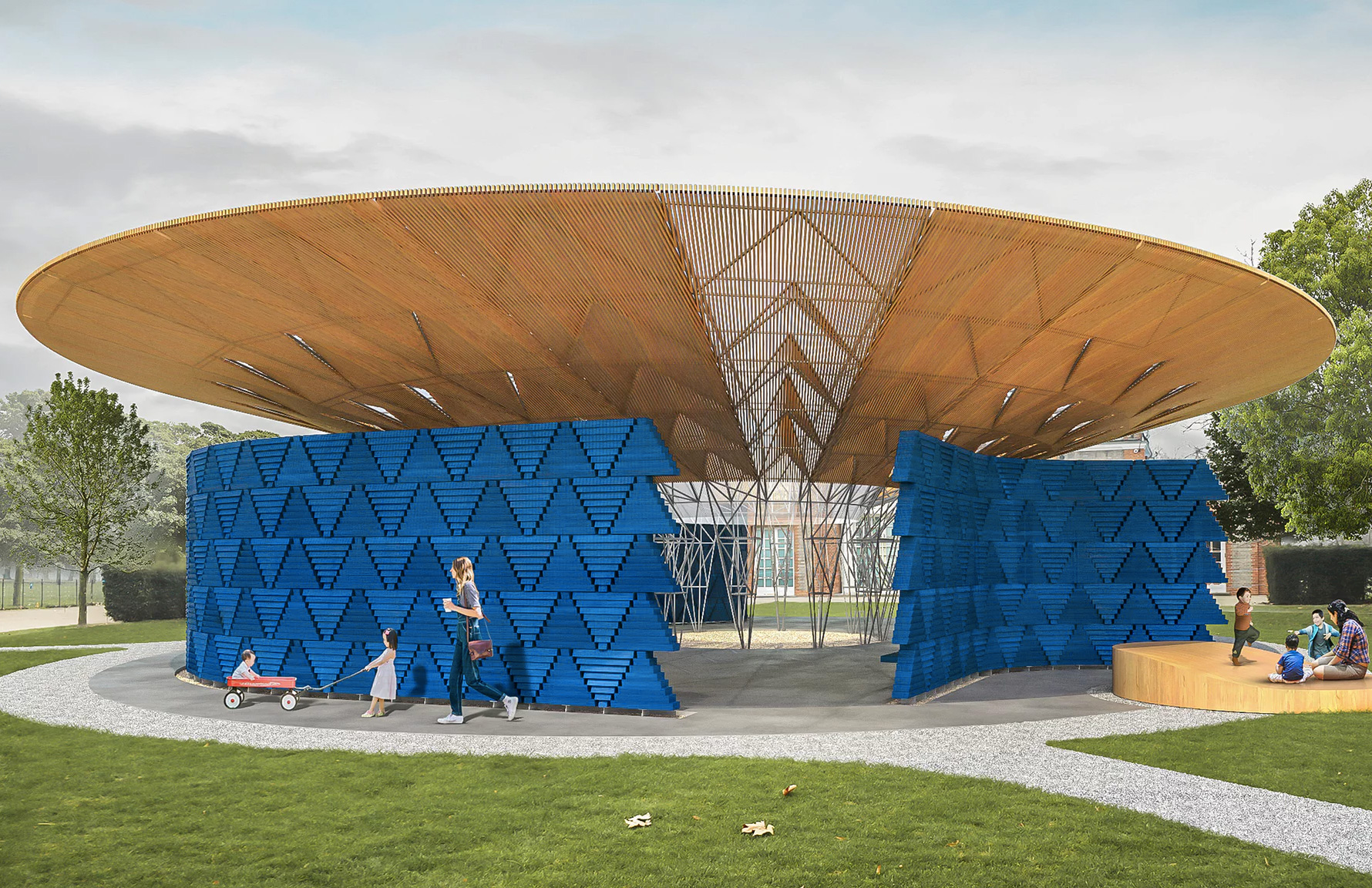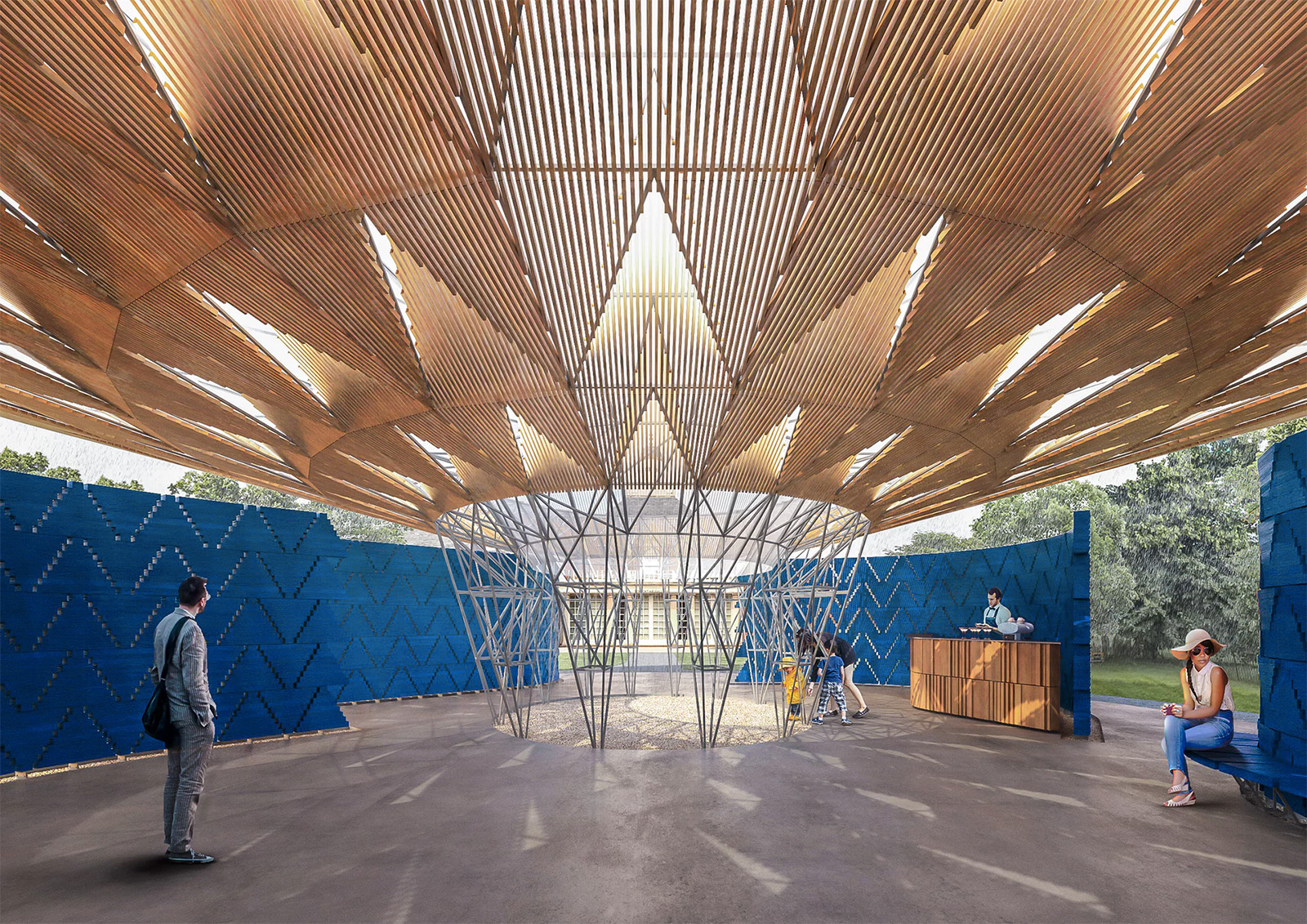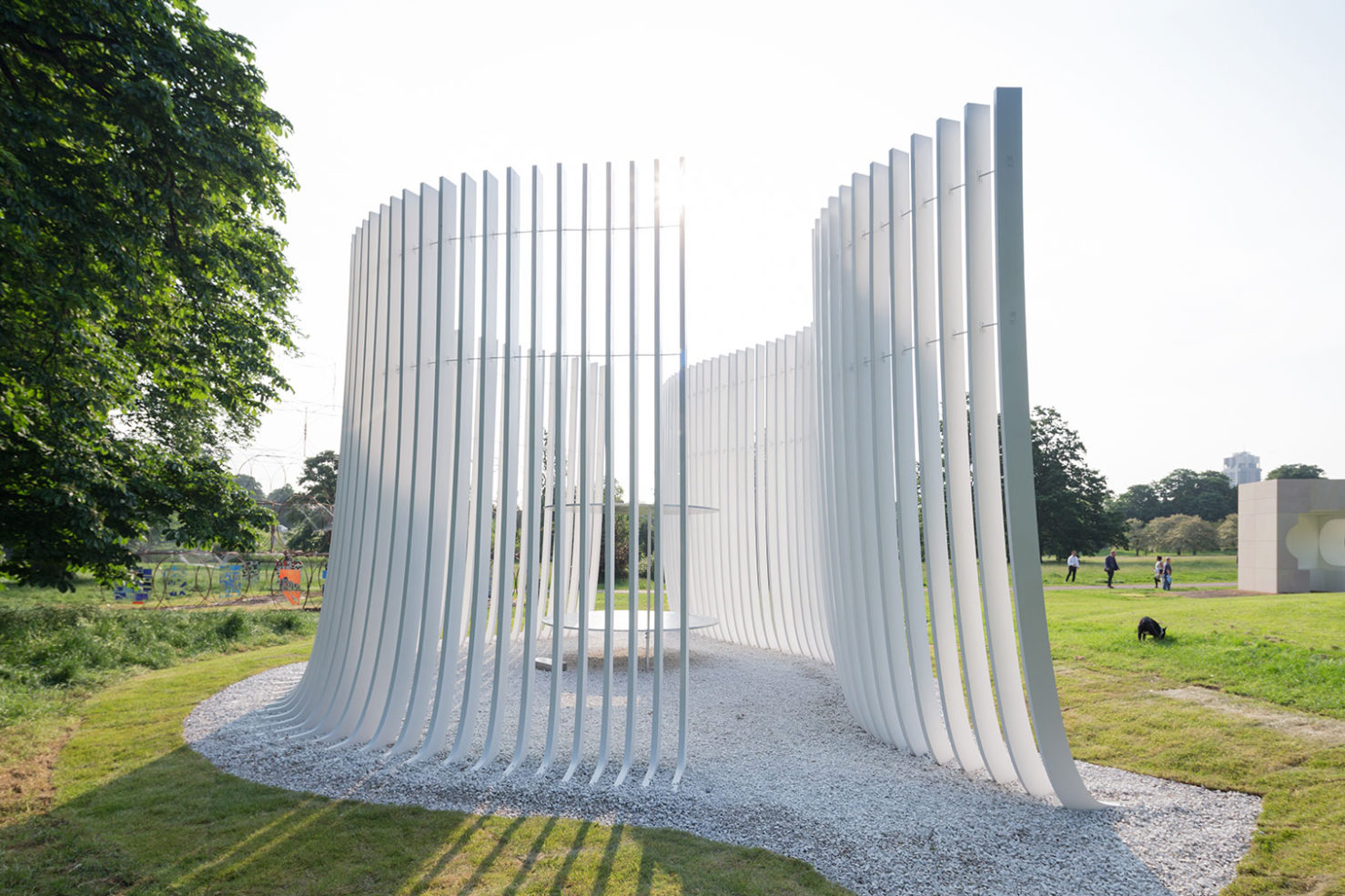
Diébédo Francis Kéré’s Serpentine pavilion. Photography: Serpentine gallery
Architect Diébédo Francis Kéré will plant a tree-like structure in London’s Kensington Gardens for this year’s Serpentine Gallery Pavilion.
Kéré – the first African to be commissioned to create the annual pavilion – has designed an angular cantilevered ‘canopy’ supported by a steel frame of pylon-like supports. Its roof has an oculus to allow rainwater to fall through the centre of the structure, creating a ‘waterfall effect’ inside.
‘The tree was always the most important place in my village,’ says the Burkina Faso-born architect. ‘It is where people come together under the shade of its branches to discuss, a place to decide matters, about love, about life. I want the pavilion to serve the same function: a simple open shelter to create a sense of freedom and community.’

Kéré’s 2017 Serpentine Pavilion will be wrapped in a textured blue wooden wall and illuminated at night to cast a graphic glow.
’In Burkina Faso, I am accustomed to being confronted with climate and natural landscape as a harsh reality,’ said Kéré. ‘For this reason, I was interested in how my contribution to this royal park could not only enhance the visitor’s experience of nature, but also provoke a new way for people to connect with each other.’
The Berlin-based architect is known for his socially driven, sustainable designs, and was chosen by a panel including David Adjaye and Richard Rogers, and Serpentine directors Yana Peel and Hans Ulrich Obrist.
Obrist and Peel added: ‘[Kéré’s design will] highlight the power of simplicity by reducing architecture to its core elements’.

Last year’s inaugural summerhouse project – with designs by Asif Khan, Kunlé Adeyemi, Yona Friedman and Barkow Leibinger commissioned alongside Bjarke Ingels’ main pavilion – will not being replicated for 2017.
Read next: Why pavilions are the new collectors’ item






















